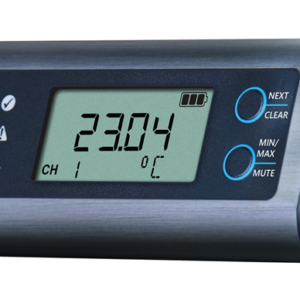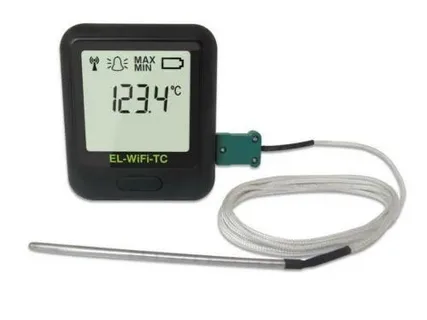Temperature monitoring is crucial in various industries, from laboratories to industrial processes. Accurate and reliable temperature data ensures product quality, safety, and regulation compliance.
In this blog post, we will explore the importance of temperature monitoring and the role of temperature logger in maintaining optimal conditions.
Why Temperature Monitoring Matters
Temperature is critical in many processes and industries, including pharmaceuticals, food storage, transportation, and manufacturing. Monitoring temperature levels ensures that products and materials are stored and transported under appropriate conditions, preserving their integrity and preventing damage or spoilage.
Ensuring Quality and Safety
In industries where temperature control is vital, such as pharmaceuticals and food processing, temperature loggers are instrumental in ensuring product quality and safety. These devices continuously monitor temperature levels, providing accurate data that can be used to validate and maintain optimal storage and processing conditions.
Compliance with Regulations
Many industries are subject to stringent regulations regarding temperature control. For example, pharmaceutical companies must comply with Good Storage Practices (GSP) and Good Distribution Practices (GDP) to ensure that drugs are stored and transported within approved temperature ranges. In such cases, temperature loggers serve as valuable tools for documenting and demonstrating compliance.

The Role of Temperature Loggers
Temperature loggers capture and record temperature data over a specific period. These loggers come in various forms, including standalone devices, data loggers connected to a computer, and wireless Data loggers transmitting real-time data.
Accurate and Reliable Temperature Data
One of the primary benefits of using a temperature logger is its ability to provide accurate and reliable temperature data. These devices are designed to capture temperature readings at set intervals, ensuring that no fluctuations or deviations go unnoticed. This data can then be analysed to identify trends, anomalies, or potential issues.
Real-time Monitoring and Alerts
Wireless temperature loggers offer the advantage of real-time monitoring. These devices transmit temperature data to a central system, allowing users to monitor temperature levels remotely. Additionally, alerts can be set up to notify users if temperature thresholds are breached, enabling immediate action to be taken to rectify any issues.
Data Analysis and Reporting
The data collected by temperature loggers can be analysed and used to generate reports. This analysis provides valuable insights into temperature patterns, trends, and potential risks. It can also aid in identifying areas for improvement and optimising temperature control processes.
Versatility and Adaptability
Temperature loggers are available in various configurations, suitable for applications and environments. Whether it’s monitoring temperature in a laboratory, a refrigerated truck, or an industrial oven, temperature logger solutions can meet specific requirements and withstand harsh conditions.
Choosing the Right Temperature Logger
Selecting the most suitable temperature logger for your needs requires considering factors such as temperature range, accuracy, data storage capacity, and user interface. Choosing a device that meets your specific requirements and complies with industry standards and regulations is essential.
Conclusion
Temperature monitoring is vital in many industries, and temperature loggers are crucial in ensuring accurate and reliable data. From laboratories to industrial processes, these devices help maintain optimal conditions, ensuring product quality, safety, and regulation compliance.
Investing in the right temperature logger solution enables businesses to proactively monitor, analyse, and improve temperature control processes, ultimately minimising risks and maximising operational efficiency.


